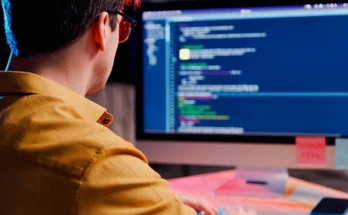Preparing for the JAIIB (Junior Associate of the Indian Institute of Bankers) exam can be a challenging task, and mock tests play a significant role in helping candidates prepare for the actual exam. Many aspirants wonder how closely these mock tests mirror the real exam in terms of content, format, and difficulty. While mock tests can be a valuable tool for practice and assessment, it’s important to understand the nuances of how they compare to the real JAIIB exam.
-
Question Format and Structure:
- Similarities: The most notable similarity between mock tests and the actual JAIIB exam is the question format. Both consist primarily of multiple-choice questions (MCQs), with the option to choose the correct answer from a list of four choices. This aligns with the structure of the actual exam, which is objective in nature. Furthermore, the mock tests are designed to simulate the same division of subjects that you’ll encounter on the real exam, such as Principles & Practices of Banking, Accounting & Finance for Bankers, and Legal & Regulatory Aspects of Banking.
- Differences: The major difference lies in the level of complexity and the distribution of questions. While most mock tests are designed to replicate the style and number of questions seen in the real exam, some may include questions that are slightly more challenging or easier. The exact level of difficulty in mock tests can vary, with some platforms emphasizing particular topics or areas. This means that although the format remains similar, the overall difficulty could fluctuate depending on the provider.
-
Time Management:
- Similarities: Just like the real exam, mock tests are timed, with each paper generally having a set duration. The time allocated for each section helps you practice and gauge your pacing, which is essential for the real exam. Time management is one of the key areas where mock tests help, as they simulate the pressure of completing the exam in the designated time frame.
- Differences: While mock tests do provide a timed structure, the actual exam may feel more intense due to factors such as exam day nerves or distractions. Additionally, in some mock tests, you might have the flexibility to pause or extend the time to review answers, which is not available during the real exam. On the day of the exam, the clock ticks down without pause, and candidates need to manage time more efficiently under real-world conditions.
-
Content Coverage:
- Similarities: Mock tests are designed to cover all major topics within the syllabus, offering a good representation of the kinds of questions you can expect on the actual exam. They generally mirror the variety of question types that test your understanding of banking principles, financial concepts, and legal aspects of banking, all of which are central to the JAIIB syllabus.
- Differences: Although the topics in mock tests are aligned with the syllabus, they may emphasize certain areas more than others, depending on how the test is structured. In contrast, the actual exam may focus on some topics that were not emphasized as much in the mock tests. The real exam could feature questions with varying depths, from basic concepts to more advanced, scenario-based queries, which might catch some candidates off guard.

-
Exam Environment:
- Similarities: Many mock test platforms now offer simulations that closely resemble the environment of the actual JAIIB exam. For example, the interface may look and function similarly to the real exam platform, helping you get accustomed to how the questions are displayed and how to navigate through them.
- Differences: Despite these advancements in technology, there will still be some differences between the mock test environment and the actual exam. For instance, the real exam might have a slightly different layout, different font sizes, or additional functionality like the ability to flag questions for review. Also, the physical environment of the exam center, including noise, distractions, and stress, can’t be fully replicated in a mock test setting.
-
Feedback and Performance Analysis:
- Similarities: Mock tests often come with detailed feedback and performance analysis, allowing you to review your strengths and weaknesses after completing each test. These insights can guide your study plan and help you focus on areas that need improvement. Some mock tests even provide explanations for the correct answers, further aiding your understanding.
- Differences: In the actual exam, you won’t receive immediate feedback or analysis of your performance. The results are typically released after the exam, which means you won’t have the luxury of reviewing your answers or getting an explanation for your mistakes in real-time. This immediate feedback in mock tests can be beneficial for learning, but it’s not available in the actual exam setting.
-
Familiarity with the Exam Pattern:
- Similarities: Mock tests are an excellent way to familiarize yourself with the overall structure and pattern of the JAIIB exam. The repeated practice helps you understand how questions are likely to be framed, what topics are essential, and how to approach different types of questions.
- Differences: The real exam might throw in some surprises, with questions that are slightly phrased differently or test concepts in a new way. While mock tests are great for practice, they may not fully predict every nuance of the actual exam’s unpredictability.
Conclusion:
While JAIIB mock tests provide an excellent way to prepare for the JAIIB exam, they are not an exact replica of the real exam. They closely mimic the exam’s format, time constraints, and content but might differ in terms of difficulty, environmental factors, and the unpredictability of the real test day. Mock tests are essential for building confidence, improving time management skills, and identifying weak areas, but candidates should remain flexible and ready for the realities of the actual exam. A combination of mock test practice and thorough study of the syllabus will be the key to success in the JAIIB exam.




